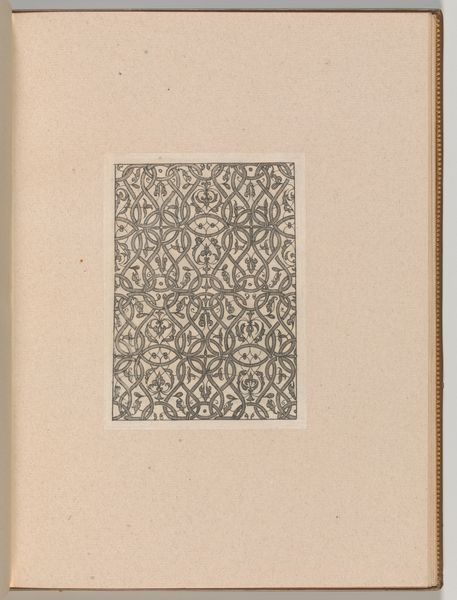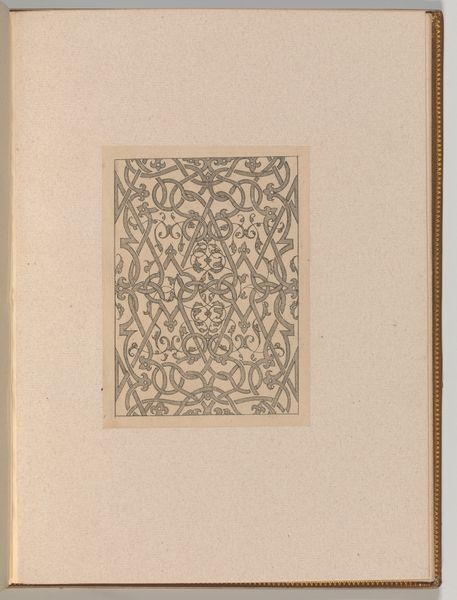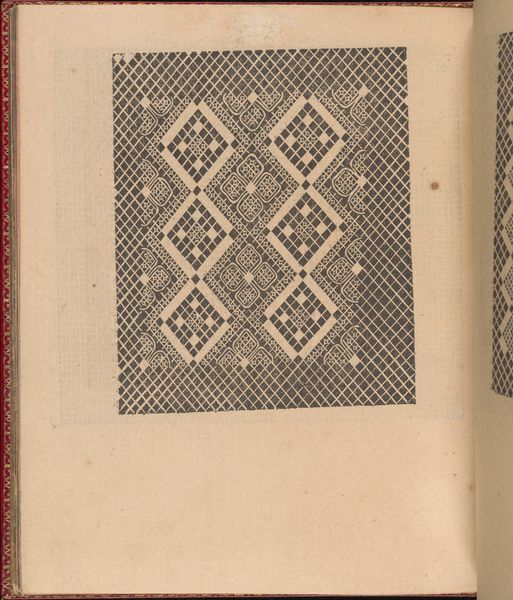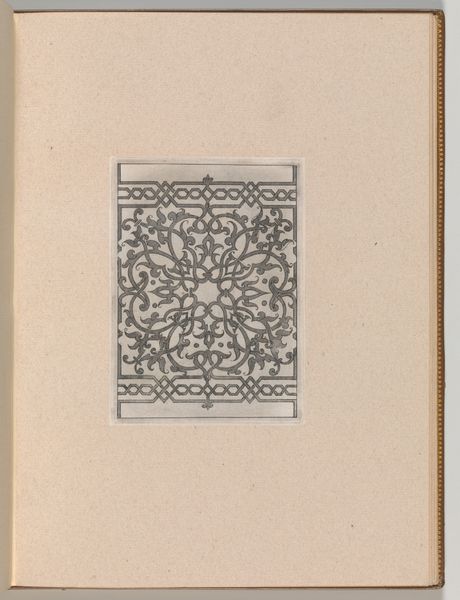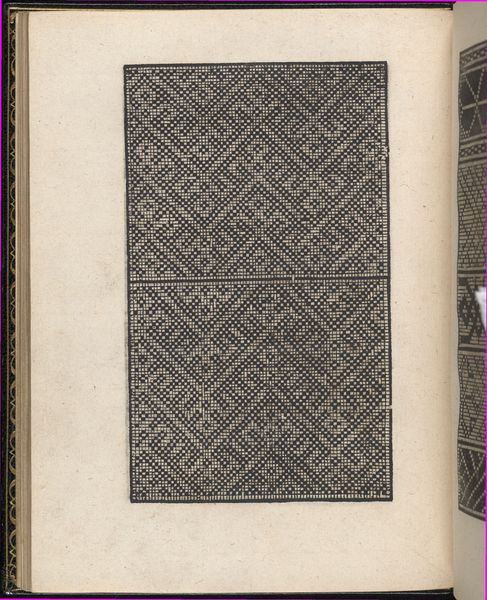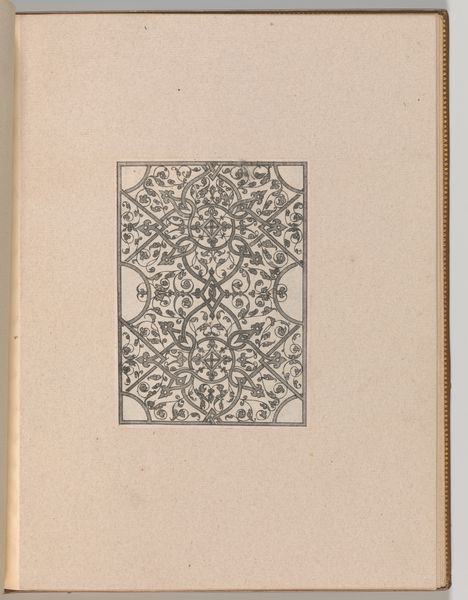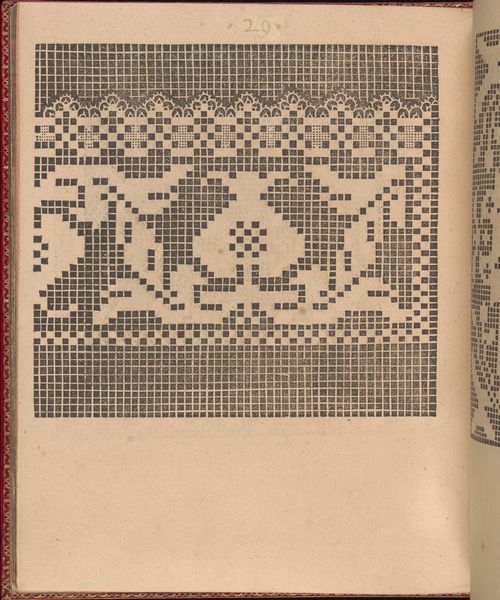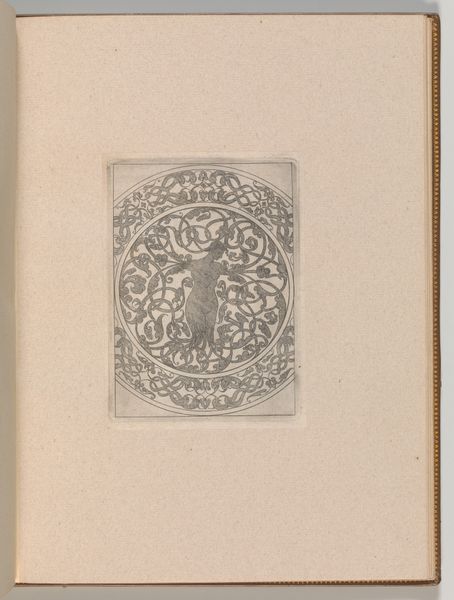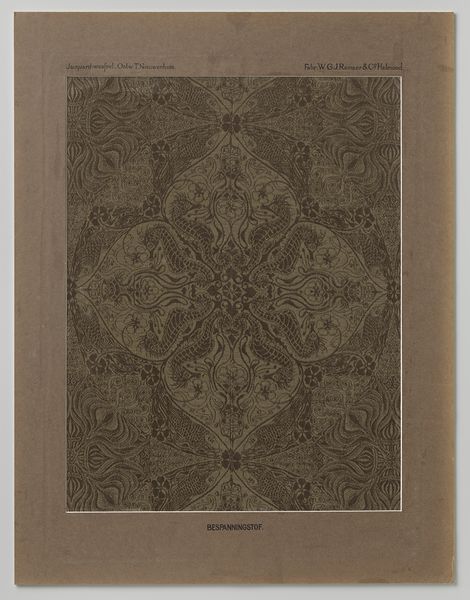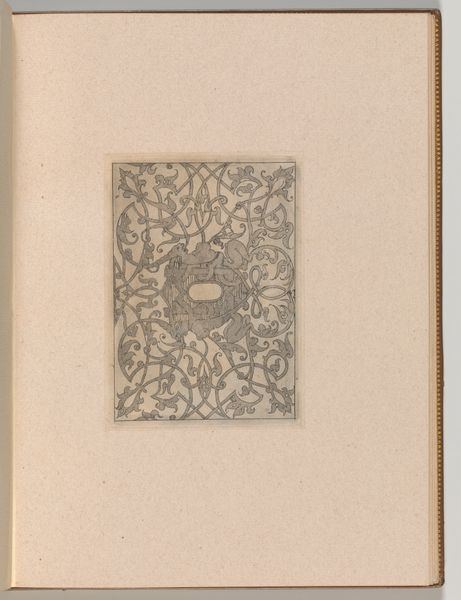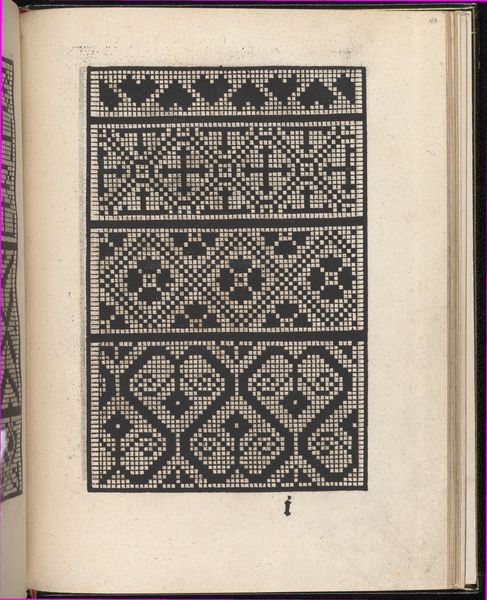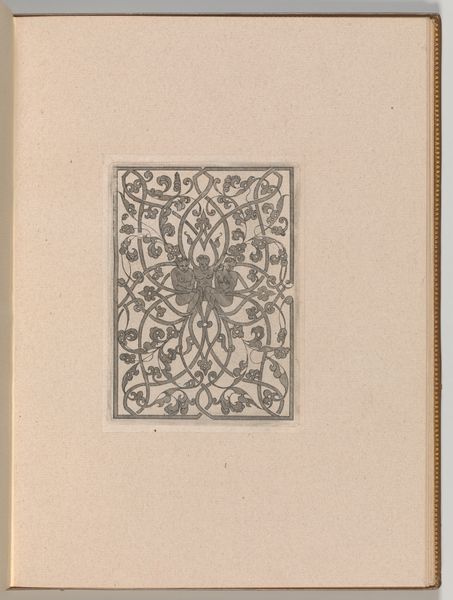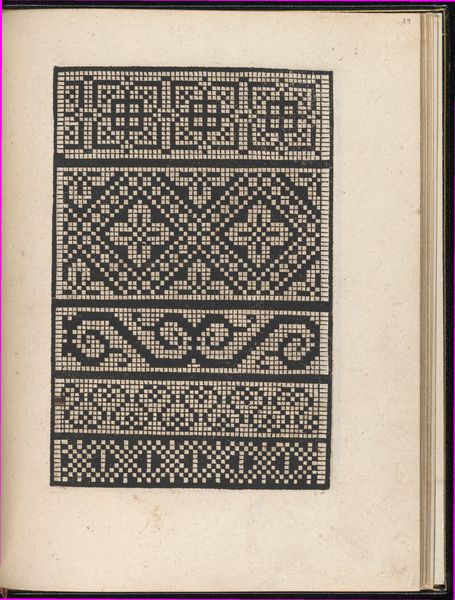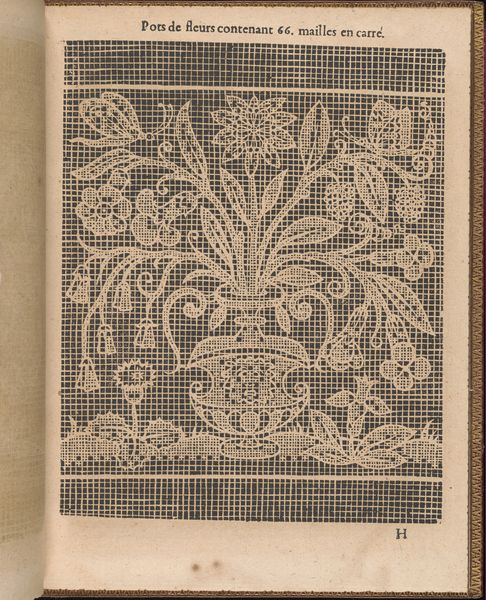
Copies after the 'Livre contenant passement de moresques' (plate 15) 1800 - 1900
0:00
0:00
drawing, graphic-art, print, engraving
#
drawing
#
graphic-art
# print
#
11_renaissance
#
engraving
Dimensions: Sheet: 4 13/16 × 3 9/16 in. (12.2 × 9 cm) Plate: 4 1/2 × 3 5/16 in. (11.5 × 8.4 cm) Overall: 10 1/16 × 7 7/8 in. (25.5 × 20 cm)
Copyright: Public Domain
This is plate 15, from 'Livre contenant passement de moresques', created by Jacques Androuet Du Cerceau around the mid-16th century. It's an engraving, meaning the design was incised into a metal plate, inked, and then printed onto paper. Now, consider the labor involved. Each line, each curve of these intricate moresque patterns had to be carefully cut by hand. This wasn’t just art; it was skilled craftsmanship. Look closely. Notice the precision, the repetition. These patterns weren't just decorative, they were models for other artisans to follow, part of a larger system of production and consumption in the Renaissance. Du Cerceau's work facilitated the spread of design ideas, influencing everything from textiles to architecture. The very act of reproducing these designs through printmaking democratized access. Once confined to the wealthy, decorative motifs could now circulate more widely. So, next time you see an print, remember the hand that guided the tool, the network of exchange it represents, and the way it blurred the lines between art, craft, and commerce.
Comments
No comments
Be the first to comment and join the conversation on the ultimate creative platform.
